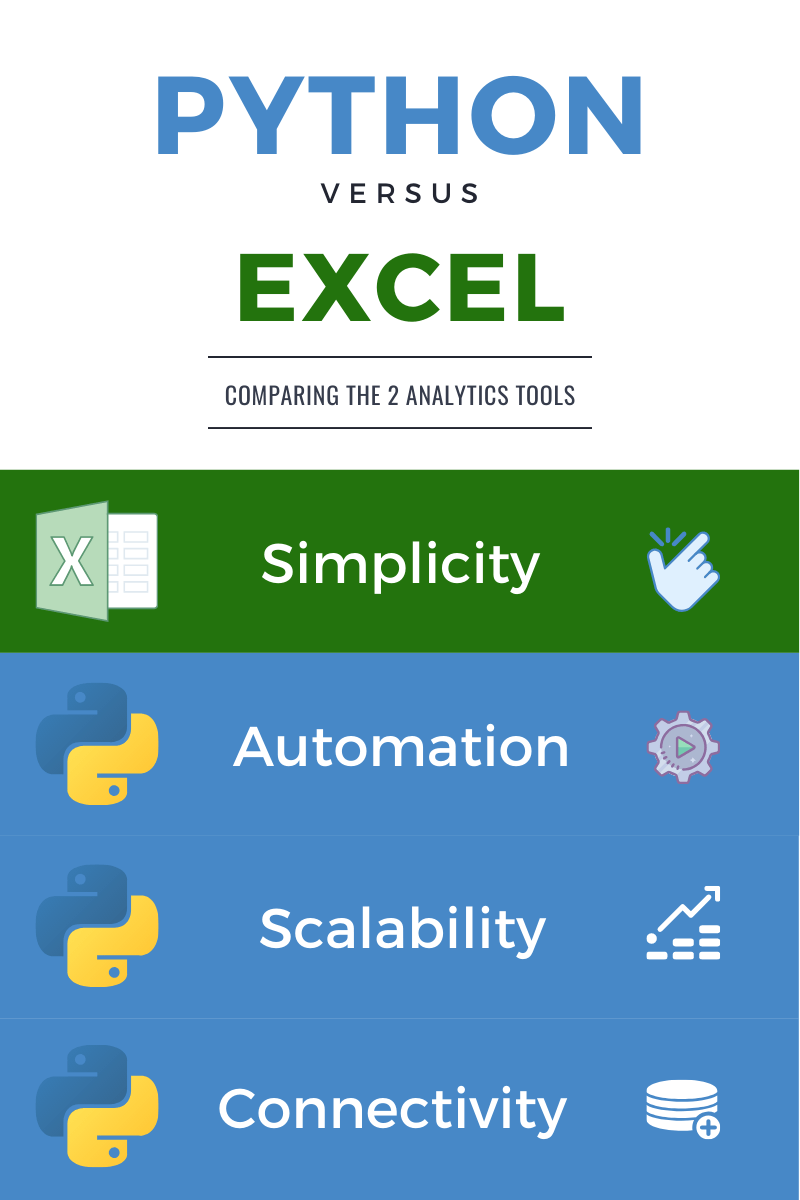
Excel reports can be instantly generated by R or Python (and others) to allow business people to play with data.

#Data analysis with excel vs python code
Simply put: you can do complex work with spreadsheets without having to understand the fundamentals of computer science or code anything. A reactive model means that everything is recalculated in real-time, and when you add new formulas to your spreadsheet, you don’t need to think about the order of computations (as in most programming languages). The main advantages of spreadsheets are flexibility paired with a simple and powerful reactive computational model. Spreadsheets are an excellent tool and they have proved their usefulness for many decades in a variety of different contexts. We will then verify which of these are still relevant and which have changed as technology shifted. We are going to take a closer look at some of the root causes of the widespread success of spreadsheets. In this post, I am going to explain my take on when it is proper to use spreadsheets and when it is desirable to switch to more advanced technology. But this is only after losing money and time due to easily avoidable errors and the inevitable, ensuing chaos they bring. There is, however, a clear trend of companies switching to Excel alternatives.
#Data analysis with excel vs python full
While working with data, we have seen the full spectrum of use cases of Excel, including some truly scary ones. Even in 2021, many companies are still largely managed with spreadsheets.


 0 kommentar(er)
0 kommentar(er)
